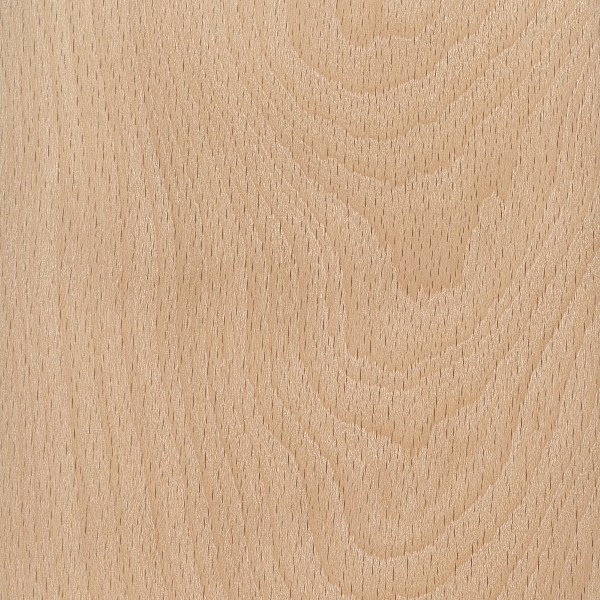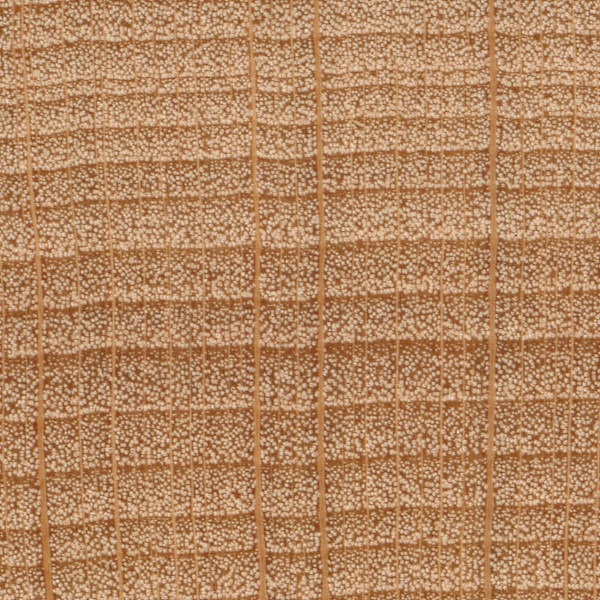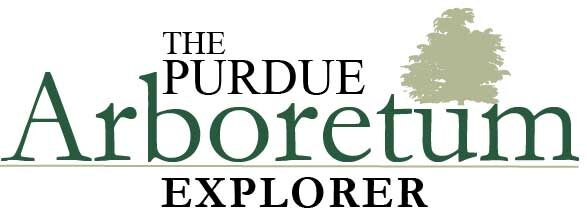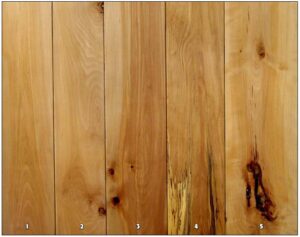Fagus grandifolia
Summary
Beech is a uniform grained wood and one of the most dense species presented here. It is low valued. The white sapwood is preferred. Young healthy trees will have wide, white sapwood and red-brown colored heartwood. Board 1 shows a characteristic flat sawn grain pattern. Boards 2 and 3 show small characteristic knots. Board 3 also shows the lightered colored sapwood in contrast to the heartwood.
Board 4 shows a spalting pattern mostly at the bottom. Spalting is actually decay and results when the logs are allowed to lay for extended times. The white wood is actually in the advanced stage of decay. The black lines are called zone lines and mark the advance of the decay fungi. Spalting is common in the dense white wood species, particularly hard maple. Board 5 is cut near to the heart of the log and shows a somewhat flatter ray fleck on the right side.
History
American beech is a well-known tree species due to its characteristic smooth, ash gray bark. The species is long lived and ranges throughout the Great Lakes region, as well as the central and southeastern United States. It is also found in portions of east Texas, Louisiana, Arkansas, and Missouri. The trees are usually found on moist, but well-drained soils. The tree is very shade tolerant. In mature stands, it is found in association with sugar maple and yellow birch. In the north, it forms a climax forest type called beech, birch, and maple.
The trees are often 70 to 80 feet tall and 2 to 3 feet in diameter. The largest reported tree is 7.4 feet in diameter at 4½ feet above the ground. Unfortunately, larger trees tend to be hollow, but this is beneficial as shelter to wildlife.
Color & Texture
The sapwood is white and wide on healthy trees, while the heartwood is darker, usually with a reddish color. The sapwood is easily discolored by oxidation and fungal stain if not properly handled in the log and green lumber stage. Pores are evenly distributed and indistinct without the use of a hand lens. Growth rings are delineated by a band of darker, dense latewood. The wood has no characteristic odor.
Beech has a unique ray pattern. The rays are relatively short but disproportionately wide. The ends of the rays can easily be seen in the flat sawn surface and when quartered. The larger rays in beech are plumb in the middle and taper on each end. They are plainly visible and distinctive to the naked eye.
Anatomical and Microscopy


Diffuse-porous; small pores gradually becoming less frequent from earlywood to latewood; solitary and in multiples and clusters; tyloses occasionally present; growth rings distinct due decreased latewood pore frequency; rays easily visible without lens, though size is inconsistent, noded; parenchyma usually not visible with lens.
Wood Properties
- Workability
- Beech is rated near the top of all of the woods discussed here in terms of planing, turning, and boring. It is
about average in shaping. - Strength
- At 12% moisture content, the strength properties of beech are high and fairly similar to hard maples and the
oaks. - Steam Bending
- Beech bends well when properly conditioned with steam.
- Drying
- A mild kiln schedule is used as the wood is somewhat difficult to dry. Surface checking occurs easily in the air
drying yard. - Shrinkage
- The total volumetric shrinkage from green to oven-dry condition for beech is 17.2%. Beech has the highest
shrinkage of any commercial hardwood except for hickory. - Decay
- Beech wood has no resistance to decay
Products
Unlike the substantial increase in popularity of maple, during the last several years, the demand for beech has changed little. Beech provides a hard surface and takes a smooth finish. As a result, it has had some unique uses such as wooden clothes pins as well as brush backs and handles, woodenware, toys, and novelties. As a strong, easily turned and bent wood, it is used for chair production. Container veneer, flooring, railroad ties, and pallets are other applications.

